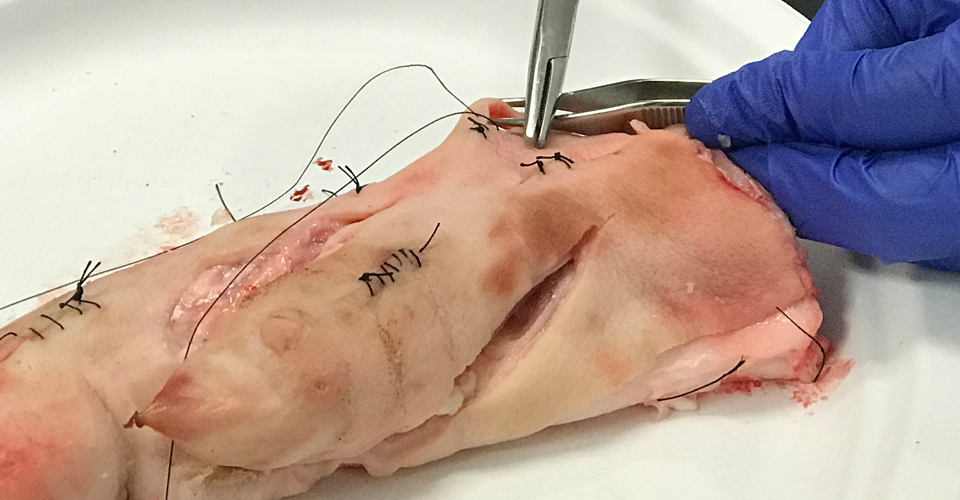The tissue sutured in technical skills labs was pig skin rescued from a butcher shop.
Third-year College of Medicine students recently wrapped up two weeks of preparation for their upcoming year of clinical rotations. Kate Kelley (M3) contributed this story.
Stepping into the MDL on a warm July morning, I was both prepared and excited to learn the technical skills necessary to start my M3 clerkships. However, peering down at the pig’s foot that would serve as my “patient” for skills training, I was not prepared for the extreme coordination needed for good suturing. All my moderate craftiness was of no help when I was presented with the multiple instruments necessary to perform sterile suture techniques. Forceps. Hemostat. Needle driver. Even the needle was foreign – more like a fishhook than something used to darn a sock.
Like wizards, the instructors were able to magically stitch together torn pieces of pig skin with flick of the wrist, a few pulls and tugs of microfilament, and nary a bead of sweat across their brow. This skill, like most in medicine, would require practice. And concentration. And then more practice.
During the two hours, I attempted different suture and knot styles, presenting my wise instructor with what seemed like a child’s messy attempt at suturing. Through many stops and starts, I began to understand how intricate and delicate even simple surgery techniques are, and that this baseline session was important to building a foundation before rotations. Moving forward, I plan on spending a lot more time in the company of a suturing practice kit, instructional YouTube videos, and a keen eye during my clerkships.
My ultimate goal: to grow from a novice to a master wizard of suturing myself, realizing that this level of perfection requires practice and patience.
